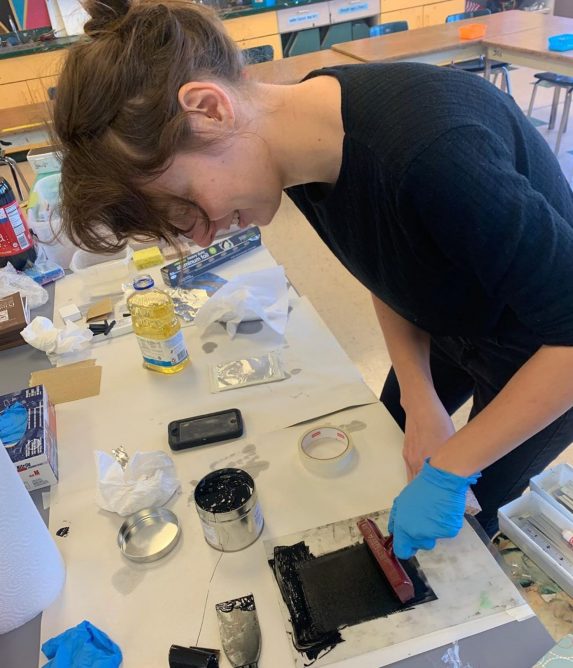5 Things I Learned about Teaching Technique

I love teaching technique, especially printmaking. I was lucky to have access to an ample budget, and a printing press at my secondary placement. I had prior experience teaching printmaking to small groups in summer camps, but I found I learned so much about teaching technique during my printmaking unit. Listed below are five things I learned about teaching technique.
- After the first lesson you will change the sequencing
I would plan out my lessons step by step in my planning, but after the first period I would have to go back in and redo many of the steps. This is because the sequencing of what I introduced changed. Students asked questions which led me to adjustments, and transferring written to practiced lessons showed me what made sense/what did not.
- The timing will change
Some students fly through projects. Some students could work on one project for an entire semester. It was a balancing act between setting hard deadlines, while being flexible and understanding for students who needed more time. For example, the collagraph unit took students two weeks, while the reductive carving unit took about four class periods. Some technical steps will be harder for students to achieve, partially due to if they have had prior experience.
- Make no assumptions: Explain everything as if it is the first time
The biggest challenge for me was starting from square one, especially for processes I’m familiar with. What do you mean you don’t know what a brayer is? Don’t print it on paper the plate, are you not thinking? Stop asking me where everything is! This is silly. Most students will not be familiar with more specialized art making processes. Make no assumptions. This also helped me really understand the technical process deeper. It is one thing to know them in my head, another to explain them to others.
- Chunking & Adaptations
I learned I cannot throw too much in one class. It’s too much to remember. I also need to be keenly aware of accommodations, and plan extra time, additional handouts, and more one on one instruction for some students.
- Provide handouts & visual aids
Handouts were key. The board was hard to see, and expo markers died shortly. These visual aids proved valuable to field questions so I wasn’t fielding the same question over and over. Additionally, people learn differently. I found a lot of students are visual learners, needing to watch me step by step, and then have those steps illustrated in front of them.
Categories Fall 2019, Student Teacher Blog